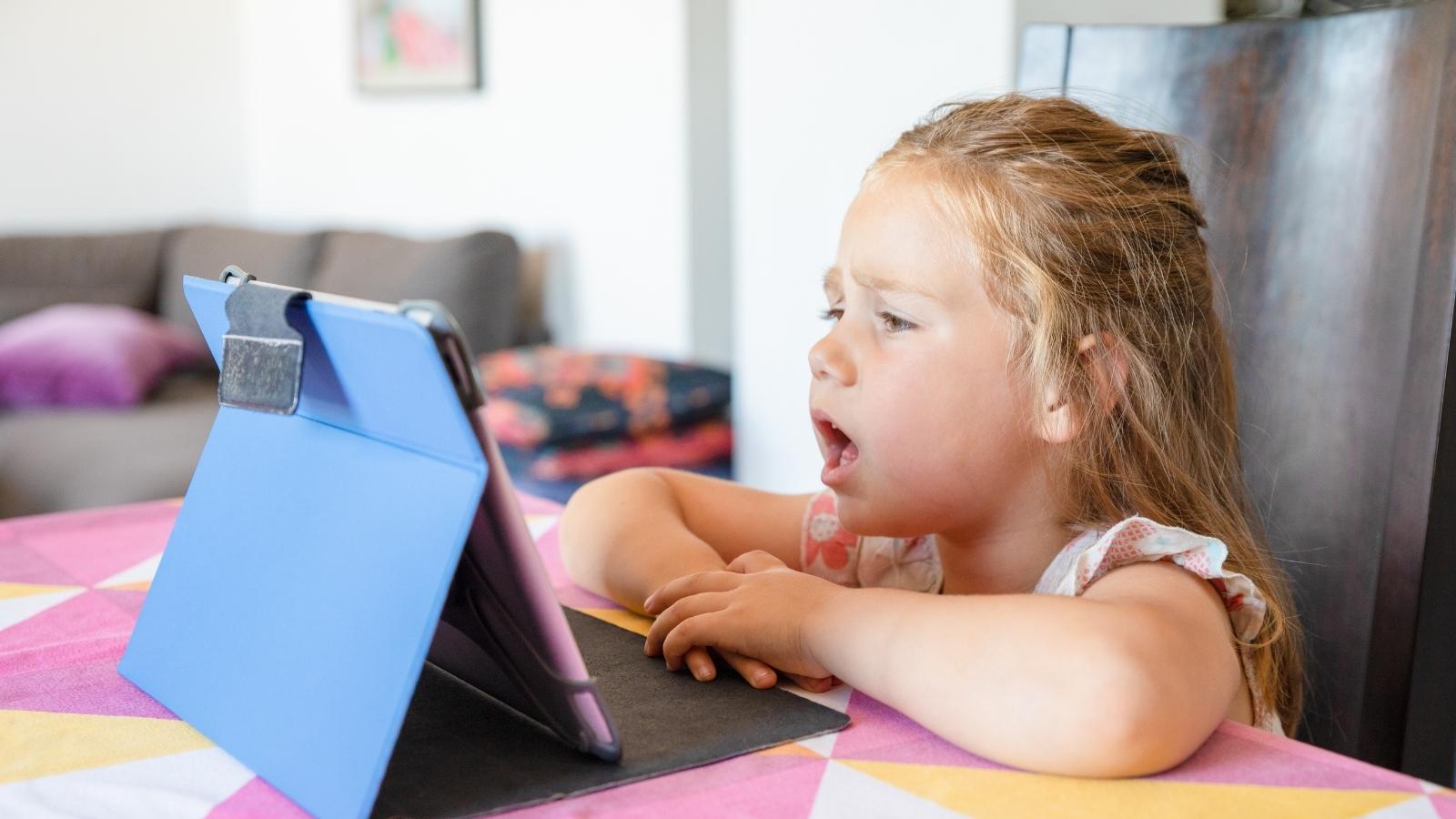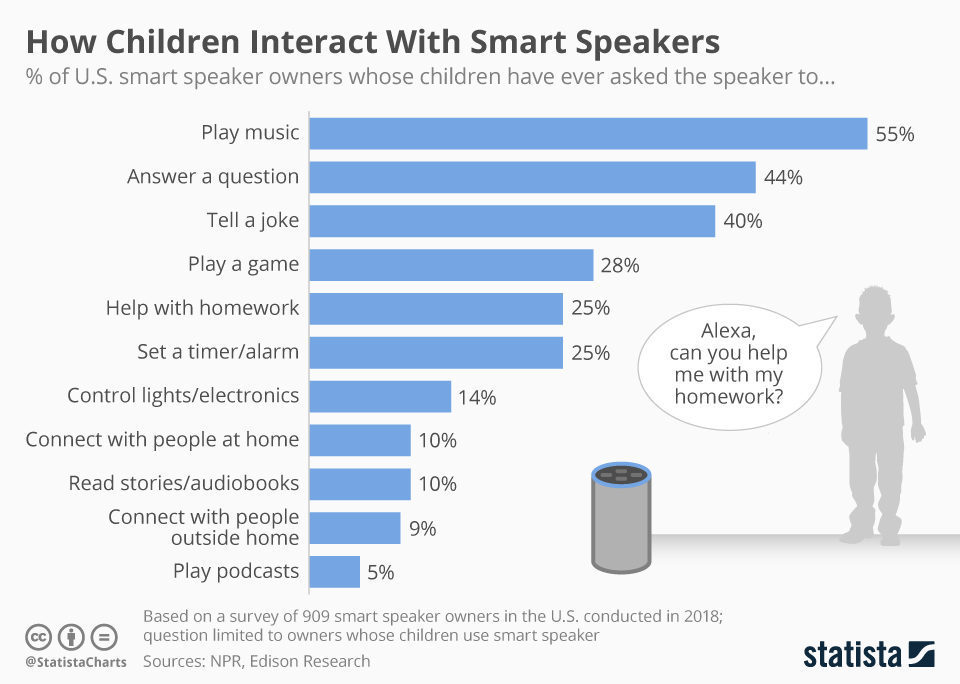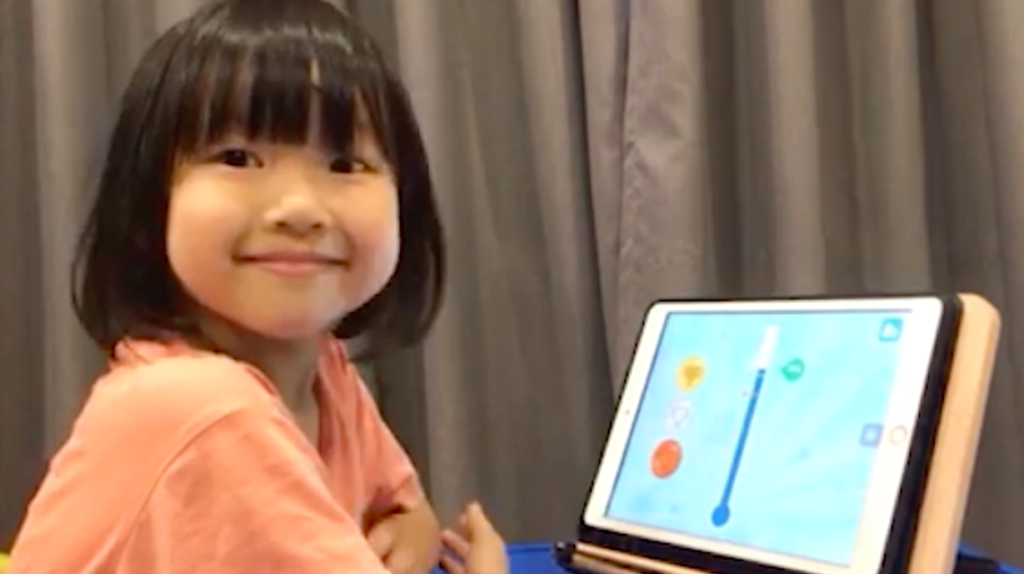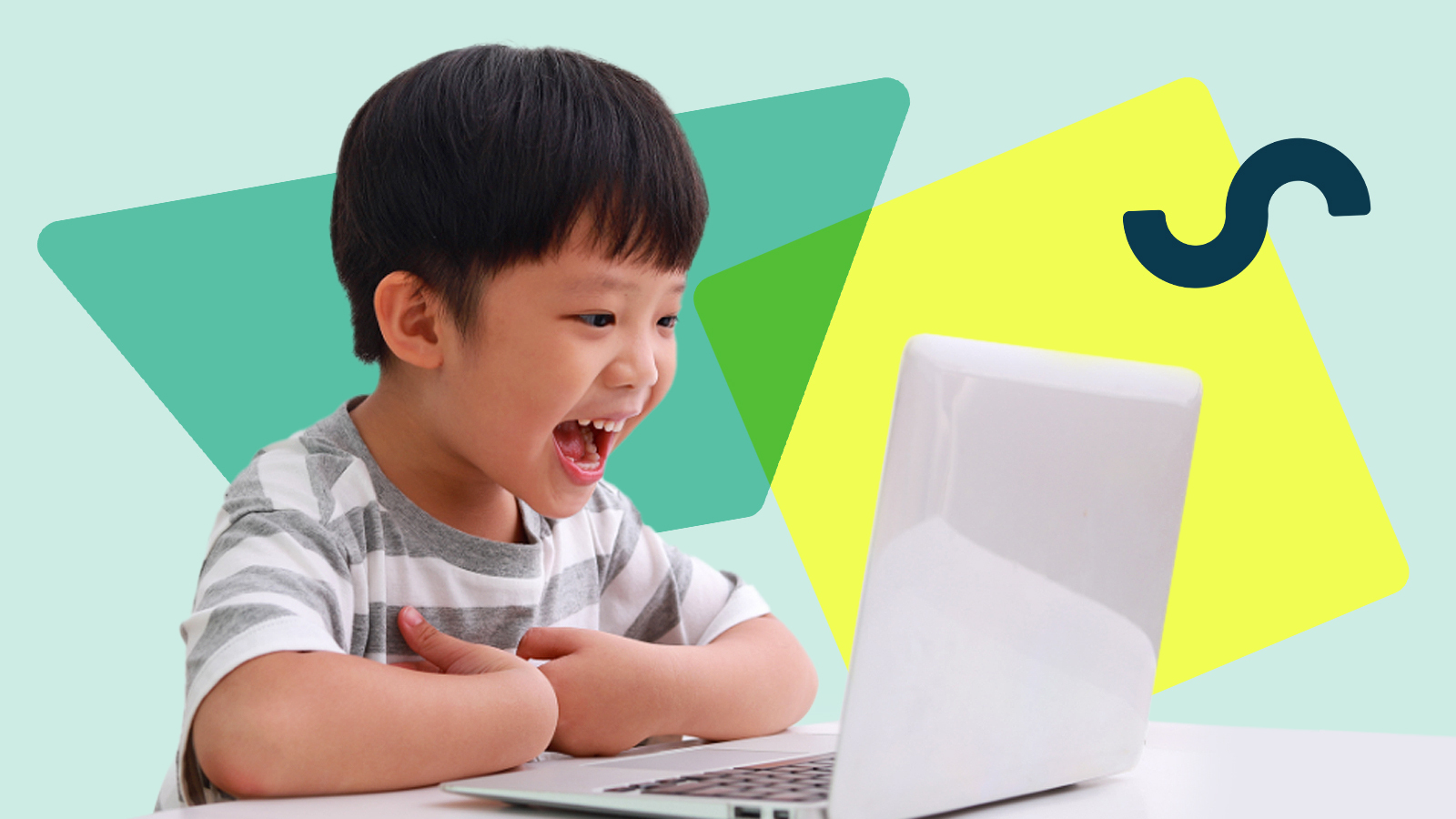Voice Technology in Education: 5 Use Cases for K-12 Schools
February 17, 2022

The latest stats are in, and they look promising: Voice technology, learning, and kids mix well.
In a 2018 NPR and Edison Research survey, U.S. smart speaker owners report that their children often use the devices to seek information, get help with homework, or read stories and audiobooks.

Educators have been slower to embrace voice tech than consumers but seem to be catching up.
In the 2017-2018 academic year, a University of Idaho project set out to explore the benefits and challenges of using voice technology in education. Teachers, administrators, counsellors, and classroom assistants from four school districts were given 90 Amazon Echo Dot speakers to use in their work with 900 students.
The feedback was overwhelmingly positive. The voice-enabled devices simplified various classroom activities, particularly through the use of timers and reminders, and students preferred to ask the voice assistants instead of looking up information on a computer or tablet.
Smart speakers have a lot of untapped potential for enhancing student learning. However, they are just one way to implement voice technology in K-12 classrooms. There are many other — and likely more impactful — use cases for voice technology in education.
Let’s take a look at some of the most promising ones.
5 use cases for voice technology in education
Here are some speech technology use cases schools should keep an eye on:
1. Reading practice
Speech recognition technology and artificial intelligence have been around since the 1950s. Yet, attempts to create voice-enabled literacy programs for kids would fail — repeatedly and as recently as 1999.
The good news is that thanks to recent technological advances, that’s no longer the case.
A new generation of tools specifically designed with children’s needs and speech patterns in mind can now provide accurate, real-time feedback. The software prompts, listens, corrects, and encourages each student as they read out loud.
This enables independent reading practice, freeing up teachers to focus on interventions only they can do. That’s a real life-saver considering that just 15 minutes of reading time per student in a class of 25 eats up over six hours of a teacher’s day.
2. Fluency and literacy assessments
A related but distinct use case are voice-enabled reading assessments. Educational institutions can leverage kids voice tech to:
- Assess each student’s fluency
- Track improvements in core reading skills
- Identify opportunities for intervention and further learning
As the software listens to the child reading, it also generates real-time insights such as:
- Insertions
- Deletions
- Substitutions
- Repetitions
- Words correct per minute
These granular data points ensure a high degree of accuracy down to the phoneme level, help eliminate assessment bias, and enable teachers to fine-tune interventions with more precision than ever before.
3. Language learning
The use of voice technology in education isn’t limited to teaching children to read in their native tongue; it can help improve their second language skills as well.
This is where speech recognition software for language learning comes in. These programs listen while students complete speaking tasks and generate pronunciation and fluency scores in real-time.
The visual representation of the scores has the added bonus of motivating children to improve and engage. They also receive encouraging feedback to help them build confidence and learn through positive reinforcement.

4. Math and science instruction
Voice technology also has an application in STEM subjects like math and science.
Speech recognition technology can be used for maths games, multiple-choice questions, or oral practice and assessment, both independently, remotely, and in a classroom environment. The interface prompts the student to say the answer out loud, congratulates them if the answer is correct, and gently encourages them to try again if they get it wrong.
5. Interactive learning
Perhaps the greatest promise of education technology is its potential to foster interactive learning.
Voice-enabled apps and programs create immersive, versatile, and highly personalized experiences that integrate seamlessly into children’s daily lives.
In the morning, they aid classroom activities. In the afternoon, they support remote learning at home, keeping students engaged, motivated, and in control of the learning process throughout the day. This sense of agency is key to building successful student-teacher partnerships and improving learning outcomes.
Things to watch out for when implementing voice technology in education
For all its benefits, the use of voice technology in education is not without risks.
Most speech recognition programs were developed for adults
The vast majority of voice-enabled solutions on the market were built for adult use cases based on adult speech datasets. This includes popular voice assistants like Amazon Alexa and Apple’s Siri and many education-specific tools.
As a result, speech recognition programs often have trouble understanding kids.
It’s not just that children use “kids” vocabulary or syntax, although it certainly doesn’t help. Children’s speech patterns are much more erratic and change as they mature. Kids also have a very different anatomy that cannot replicate the pitch of adult voices, including:
- Smaller vocal folds
- An immature larynx
- Shorter and thinner vocal tracts
Software isn’t immune to bias
Technology is made by humans and carries their inherent prejudices. This is always problematic but can be especially pernicious in educational settings where equity and inclusivity are paramount.
If speech recognition software doesn’t perform equally well across accents, dialects, ages, races, and ethnicities, the system will inevitably generate false negatives or false positives.
Telling students that they read or pronounced something wrong when they didn’t can hurt their confidence. By the same token, telling them that they’re right when they aren’t deprives them of valuable learning opportunities.
Children’s data privacy is a top priority
Children have a fundamental right to voice data privacy. In practical terms, this means that speech recognition systems should not:
- Tie any of the collected data to identifiable individuals or unique user profiles
- Share or sell data to third parties
- Use collected data for marketing or advertising purposes
Increasingly, regulators also require technology providers to introduce data protection safeguards at the earliest possible stage of the design and engineering process. This is known as “privacy by design,” a concept included in both the EU General Data Protection Regulation (GDPR) and the U.S. Online Privacy Protection Act (COPPA).
Technology isn’t a substitute teacher
Not even the most advanced artificial intelligence can replace human educators. The role of voice assistants and speech recognition solutions is to complement and enhance, not substitute, a teacher-led process.
Voice technology in education: The bottom line
Speech recognition systems for kids are already transforming education as we know it. However, it needs to be done carefully.
At a minimum, schools looking to integrate voice-enabled EdTech into their workflows should verify that the voice technology is built from children’s voice data and that steps were taken to ensure privacy by design and eliminate inherent bias.
Want to learn more about voice technology in education? Read our Educate white paper for a deeper dive into this topic.




